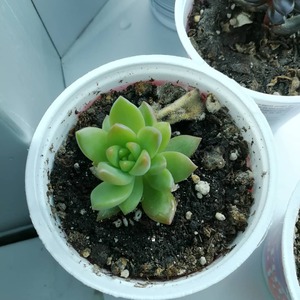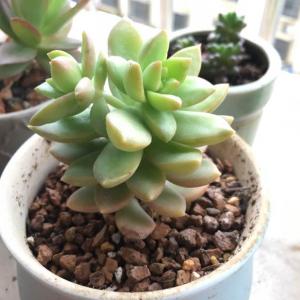动态 (221)
格桑花
2023年10月30日

The Essence of Community
At its core, a community represents a group of individuals united by common interests, goals, or circumstances. Whether it's the neighborhood we reside in, a religious group, or an online forum dedicated to a specific hobby, communities play a pivotal role in shaping our beliefs, behaviors, and outlooks. They act as our extended family, offering love, guidance, and a sense of belonging.Benefits of Social Support
Humans are inherently social beings. We thrive on connections and derive emotional nourishment from relationships. Social support, stemming from these relationships, offers various benefits:- Emotional Resilience: The emotional cushioning provided by friends, family, or community members can aid in coping with challenges, traumas, or everyday stresses.
- Improved Mental Health: Regular social interactions can ward off feelings of isolation, reducing the risks of depression and anxiety.
- Shared Resources: Be it knowledge, physical resources, or opportunities, being part of a community can amplify access to various resources.
Communities as a Source of Learning and Growth
Communities offer a rich tapestry of experiences, wisdom, and perspectives. Interacting with community members can lead to personal growth, new learnings, and a broader understanding of the world. It's in communities that traditions are passed down, innovative ideas are birthed, and shared values are reinforced.Championing Social Causes
When individuals unite under the banner of a community, their collective voice holds power. Communities can drive social change, advocate for the marginalized, and champion various causes. From environmental conservation movements to support groups for specific health issues, communities can be catalysts for positive change in society.Digital Age: The Rise of Online Communities
With the proliferation of the internet, the concept of community has evolved. Online communities, spanning across platforms like forums, social media groups, or dedicated websites, bring together individuals from diverse geographies and backgrounds. These virtual communities, despite the lack of physical interactions, can offer immense support, resources, and camaraderie.Building and Nurturing Communities
Building a thriving community requires effort, dedication, and a clear sense of purpose. Whether it's creating safe spaces for open dialogue, organizing community events, or fostering an inclusive environment, nurturing a community is an ongoing endeavor. Community leaders play a crucial role in setting the tone, facilitating interactions, and ensuring the collective well-being of members.Conclusion: The Timeless Value of Togetherness
Communities and the social support they offer are invaluable aspects of human existence. As society continues to evolve, the essence of community remains constant - providing a sense of belonging, a space for shared experiences, and an anchor in the ever-changing currents of life.
文章
格桑花
2023年10月30日

Understanding the Basics of Pet Health
Pet health encompasses a broad spectrum ranging from physical well-being to emotional and mental wellness. Just like humans, pets require a balanced diet, regular exercise, and timely medical check-ups to ensure they lead a healthy and happy life. It's crucial to recognize that each species, breed, and individual animal might have specific health requirements. For example, the dietary needs of a young Labrador will differ vastly from an older Siamese cat.Nutritional Essentials
A pet's diet plays a pivotal role in determining its overall health. Commercial pet foods often provide a balanced mix of nutrients; however, it's essential to select brands and products that cater to your pet's specific age, size, and health needs. Reading ingredient lists, understanding protein sources, and avoiding fillers and additives can significantly improve your pet's diet. Some pets might also benefit from supplements like omega fatty acids, joint support formulas, or probiotics.Regular Exercise and Mental Stimulation
Physical activity is crucial for maintaining a healthy weight and promoting cardiovascular health in pets. Depending on the pet, this could mean daily walks, play sessions, or even agility training. Equally important is mental stimulation. Toys, puzzles, training sessions, and interactive playtimes can keep a pet mentally sharp and curb behavioral issues stemming from boredom or anxiety.Preventive Healthcare
Regular vet check-ups are a cornerstone of preventive pet healthcare. These visits can help in early detection of potential issues, ensuring timely intervention and treatment. Vaccinations, flea and tick prevention, dental care, and spaying or neutering are some of the vital aspects of a pet's regular healthcare regimen. Always maintain a record of your pet's medical history, vaccinations, and any medications they might be on.Emotional Well-being and Socialization
A pet's emotional well-being is intricately linked to its overall health. Stress, anxiety, or prolonged isolation can manifest as behavioral problems or even physical ailments. Socialization from a young age, positive reinforcement training, creating a safe and enriching environment, and providing regular human interaction are essential steps in ensuring your pet's emotional health.Special Considerations for Senior Pets
As pets age, their health requirements evolve. Senior pets may develop age-related conditions like arthritis, vision impairment, or dental issues. They may also require a modified diet and more frequent health screenings. Regular vet visits, a comfortable living environment, and tailored exercise regimens can help in managing the health of older pets.Conclusion: A Holistic Approach to Pet Wellness
Ensuring the health and wellness of a pet goes beyond providing food and shelter. It requires a comprehensive understanding of their physical, emotional, and social needs. By adopting a proactive approach — encompassing a balanced diet, regular exercise, timely medical care, and emotional support — pet owners can ensure that their furry friends lead a happy, healthy, and fulfilling life.
文章
格桑花
2023年10月29日

Defining Grief and Its Many Faces
Grief is a profound emotional response to loss, particularly the death of a loved one. However, it's essential to understand that grief is multifaceted and can also emerge from losing a relationship, job, health, or a cherished dream. The process is highly individualized, with every person experiencing it differently based on their personal beliefs, culture, and coping mechanisms. While some may associate grief merely with sadness, it encompasses a myriad of emotions such as anger, guilt, disbelief, and even relief.The Five Stages of Grief
Introduced by Dr. Elisabeth Kübler-Ross in the 1960s, the five stages of grief — denial, anger, bargaining, depression, and acceptance — offer a framework for understanding how people process loss. Though widely referenced, it's essential to note that these stages are not linear. Some may not experience all the stages, and the order can vary. They serve as a general guideline, allowing individuals to recognize and validate their feelings.Societal Expectations vs. Personal Reality
Cultures and societies often have set expectations about grieving — how long it should last, how it should manifest, and what is considered 'normal.' These expectations can sometimes hinder the healing process. Every person's journey with grief is unique, and there's no right or wrong way to grieve. Emotions can be intense and unpredictable, and what helps one person might not work for another.Coping Mechanisms and Support
Seeking support during the grieving process can be crucial for emotional well-being. This support can come from friends and family, grief counseling, or support groups. Expressing feelings, whether verbally or through writing, can provide relief. Moreover, self-care, including maintaining a routine, getting adequate sleep, and engaging in physical activity, can have therapeutic benefits. Spiritual practices, such as meditation or prayer, can also be a source of comfort and grounding for many.The Longevity and Evolution of Grief
Grief doesn't have a predefined timeline. For some, the intensity may diminish after a few months, while for others, it can linger for years. It's not uncommon for feelings of grief to resurface during anniversaries, holidays, or other triggering events. Over time, most individuals find a way to navigate their loss, incorporating it into their life's narrative. They learn to live with their grief, allowing joy and sorrow to coexist.Conclusion: A Personal Journey Towards Healing
Grief, with all its complexities, is a testament to the depth of human emotion and the bonds that connect us. While the pain of loss can be overwhelming, with time, understanding, and support, healing becomes attainable. By acknowledging and processing grief, one can eventually find a renewed sense of purpose and embrace life with its myriad emotions.
文章
格桑花
2023年10月29日

Defining Body Image and Self-Esteem
Body image refers to how individuals perceive their own bodies, including their feelings about their appearance and how they believe others see them. It's not just about what they see in the mirror, but how they feel about their physical self. Self-esteem, on the other hand, is a broader concept about one's overall sense of self-worth and value. It encompasses feelings and beliefs about oneself beyond physical appearance. These two concepts, while distinct, often intertwine deeply, influencing and shaping each other.The Influence of Media and Culture
In today's digital age, media has a profound influence on body image. Images of 'ideal' bodies flood social platforms, magazines, and television, often portraying unrealistic or heavily edited standards of beauty. This consistent exposure can warp perceptions, making individuals feel inadequate or pressured to conform. Cultural standards also play a role, as beauty ideals vary widely across the globe and can either support or challenge one's self-worth.Impact on Mental Health
A negative body image can lead to severe mental health challenges. Constant feelings of inadequacy or dissatisfaction with one's body can spiral into conditions like depression, anxiety, or eating disorders. The weight of societal expectations and perceived judgments can be crushing, diminishing an individual's self-esteem and overall happiness. On the flip side, a positive body image and robust self-esteem can act as protective factors, bolstering mental resilience.Building a Positive Body Image
Cultivating a positive body image starts with self-awareness. Recognizing and challenging negative self-talk is pivotal. Surrounding oneself with supportive friends and family, setting realistic and healthy goals, and limiting exposure to negative media influences can also help. Celebrating one's uniqueness and understanding that real beauty is diverse and multifaceted can shift perceptions. Embracing and appreciating what one's body can do, rather than solely focusing on appearance, can foster gratitude and a deeper connection with oneself.Strengthening Self-Esteem
Boosting self-esteem requires effort and consistency. Activities like journaling positive affirmations, practicing self-compassion, and seeking therapy can be beneficial. Engaging in activities that one is passionate about can also uplift self-worth. Moreover, understanding that everyone has strengths and weaknesses, and accepting oneself holistically, can pave the way to genuine self-love.Conclusion: The Journey to Self-Acceptance
The connection between body image and self-esteem is intricate, with societal influences playing a significant role. Yet, at the core, the journey is deeply personal. Every individual deserves to feel worthy, valued, and accepted. Through self-awareness, support, and a continuous commitment to self-love, it's possible to navigate this complex landscape and emerge with a reinforced sense of self.
文章
格桑花
2023年10月29日

Defining Eating Disorders
Eating disorders are serious and complex mental health conditions characterized by abnormal eating habits that negatively affect physical and mental health. They aren't just about food, but often arise from issues of control, self-esteem, or trauma. Despite misconceptions, they aren't limited by gender, age, or socioeconomic status; anyone can be affected.The Spectrum of Eating Disorders
While there are various types of eating disorders, the most commonly known include:- Anorexia Nervosa: Characterized by a distorted body image and intense fear of gaining weight, leading to self-starvation and severe weight loss.
- Bulimia Nervosa: Involves cycles of binge eating followed by purging behaviors, such as vomiting or over-exercising, to prevent weight gain.
- Binge Eating Disorder (BED): Similar to bulimia but without regular purging, resulting in feelings of guilt, shame, and loss of control.
Underlying Causes and Risk Factors
The origins of eating disorders are multifaceted and may encompass biological, psychological, and sociocultural factors. Genetics may predispose certain individuals, while hormonal changes during puberty can act as triggers. Psychologically, factors like perfectionism, body dissatisfaction, and personal trauma can contribute. Socioculturally, the modern emphasis on thinness, beauty standards, and media portrayals play a significant role in fostering unrealistic body ideals.Physical and Psychological Consequences
The health implications of eating disorders are profound. Physically, they can lead to malnutrition, organ failure, osteoporosis, and even death. Electrolyte imbalances from behaviors like purging can cause cardiac arrest. Beyond physical health, these disorders often coincide with depression, anxiety, and feelings of isolation, exacerbating the cycle of self-harm.Treatment and Recovery
Recovery from an eating disorder requires a holistic approach. Effective treatments often combine psychotherapy, nutritional education, and medical monitoring. Cognitive Behavioral Therapy (CBT) and family-based treatments have proven beneficial. In severe cases, hospitalization might be necessary. Recovery is a journey that may require ongoing therapy and support, but with the right help, many can and do recover.Breaking the Stigma
As society becomes more aware of the severity and prevalence of eating disorders, it's crucial to combat misinformation and stigma. Understanding that these are serious conditions — not mere lifestyle choices — is vital. Encouraging open conversations, educating others, and supporting affected individuals without judgment can foster a compassionate environment conducive to healing.Conclusion: The Path to Understanding and Support
Eating disorders, while challenging, are not insurmountable. With increased awareness, understanding, and the right therapeutic interventions, individuals can find their way back to health and balance. Societal change, in its perception of body ideals and understanding of mental health, is also pivotal in preventing these disorders in future generations.
文章
格桑花
2023年10月29日

The Biology of Aging
Aging, at its core, is a biological process involving the gradual decline of bodily functions. As cells undergo countless divisions, they accumulate damage, partly due to environmental factors and partly due to internal processes like oxidative stress. Over time, this damage impacts the efficiency and function of cells, tissues, and organs. At the molecular level, the shortening of telomeres—the protective caps at the end of chromosomes—plays a significant role in the aging process.Modern Anti-Aging Solutions
Driven by a combination of vanity and the human desire for longevity, anti-aging solutions have become a multi-billion-dollar industry. Advances in dermatology have led to innovative treatments, including:- Retinoids: Derived from vitamin A, these are considered the gold standard in wrinkle prevention, boosting collagen production and increasing skin cell turnover.
- Peptides: Small proteins that help stimulate new cells to grow and help existing cells function more efficiently.
- Antioxidants: Compounds that neutralize harmful free radicals, with vitamin C, vitamin E, and ferulic acid being notable examples.
- Laser Treatments: Procedures that target the skin's deeper layers, promoting collagen production and addressing various aging concerns.
Diet, Exercise, and Longevity
The relationship between lifestyle choices and longevity is undeniable. Diets rich in whole foods, particularly vegetables, fruits, whole grains, and lean proteins, offer nutrients that combat aging. Omega-3 fatty acids, for instance, combat inflammation, a major aging accelerant. Regular physical activity, be it aerobic exercises, strength training, or flexibility exercises, not only keeps the body agile but also improves mental health. Moreover, practices such as caloric restriction and intermittent fasting have shown promising results in extending life span in various organisms.Mindfulness and Mental Well-being
Mental and emotional well-being is as crucial to longevity as physical health. Chronic stress accelerates cellular aging and can lead to shorter life spans. Practices like meditation, yoga, and deep-breathing exercises can reduce stress levels, promoting a calm and focused mind. Engaging in hobbies, nurturing social connections, and continuous learning further enhance cognitive functions and emotional well-being, contributing to healthy aging.Gene Therapy and Future Potential
The realm of genetics holds promise in the quest for longevity. Recent advances in gene therapy aim to target and rectify cellular malfunctions at the DNA level. By understanding and potentially modifying specific genes linked to aging, scientists aspire to not only extend life span but also ensure a higher quality of life in later years.Conclusion: A Holistic Approach to Aging
Aging is inevitable, but the rate and manner in which one ages can be influenced. While science continually seeks innovative solutions, embracing a holistic lifestyle—consisting of a balanced diet, regular exercise, mental wellness practices, and preventive health measures—remains the most effective strategy for graceful aging and longevity. After all, the quest for timelessness is as much about quality as it is about quantity.
文章
格桑花
2023年10月29日

A Deep Dive into Skin: Our Body's Largest Organ
The skin is not just a protective barrier; it's a dynamic organ reflecting our health, age, and lifestyle. Consisting of the epidermis, dermis, and subcutaneous layers, the skin plays crucial roles including protecting against pathogens, regulating temperature, and sensing the external environment. Given its vital functions and visibility, maintaining skin health is paramount to both our physiological and psychological well-being.The Pillars of Effective Skin Care
To achieve radiant and healthy skin, one must consider the following fundamental aspects:- Cleansing: Regularly washing the face to remove dirt, oil, and makeup. This aids in preventing clogged pores, which can lead to breakouts.
- Moisturizing: Hydration is essential for a plump and smooth complexion. Moisturizers lock in water, preventing dryness and skin irritation.
- Sun Protection: Daily application of sunscreen can safeguard the skin from harmful UV rays, which cause premature aging and increase the risk of skin cancers.
- Exfoliation: Periodic removal of dead skin cells using scrubs or chemical exfoliants rejuvenates the skin, allowing for better product absorption.
The Beauty of Personalized Skin Care
Every individual's skin is unique, influenced by factors like genetics, age, diet, and environmental exposures. Therefore, skin care isn't a one-size-fits-all; it requires personalization. Recognizing your skin type—whether it's oily, dry, combination, sensitive, or normal—is the first step to tailor a regimen that addresses specific concerns and needs.Natural Vs. Synthetic: Ingredients Matter
The beauty industry has witnessed a surge in products championing natural and organic ingredients. While these are perceived as safer, it's crucial to remember that the efficacy of a product depends on its formulation. Whether natural or synthetic, understanding ingredient lists helps in making informed choices, avoiding allergens, and identifying actives that target specific skin issues.Beauty Beyond the Jar: Lifestyle and Skin Health
Achieving glowing skin extends beyond topical treatments. Factors like a balanced diet, adequate water intake, regular exercise, and stress management play pivotal roles. Nutrients like omega fatty acids, antioxidants, and vitamins enhance skin health from within. Meanwhile, managing stress through meditation or relaxation techniques can prevent flare-ups of conditions like acne or eczema.Conclusion: The Interplay of Science and Aesthetics
Skin care intricately intertwines the realms of science and beauty. It's an evolving journey, requiring consistent care, adaptability based on changing needs, and an understanding of the advancements in dermatological research. Embracing a holistic and informed approach ensures that the skin, our most visible organ, remains as radiant and vibrant as the personalities it encases.
文章
格桑花
2023年10月29日

Sports Medicine: An Overview
Sports medicine, a specialized branch of medical science, addresses the physical and physiological aspects of sports and exercise. It not only focuses on treating sports-related injuries but also emphasizes optimizing the athlete's performance and enhancing overall fitness levels. With the increasing involvement of individuals in recreational and professional sports, the role of sports medicine in ensuring the holistic well-being of an athlete has gained paramount importance.The Pillars of Injury Prevention
The prevention of injuries is an integral part of sports medicine. By understanding the biomechanics of different sports, medical professionals can pinpoint common injury sites and mechanisms. The key pillars of injury prevention include:- Pre-participation Evaluation: A comprehensive health check-up before commencing any sports activity to identify potential risk factors.
- Proper Training: Ensuring athletes adhere to well-structured training regimens tailored to their specific sports to avoid overuse injuries.
- Equipment: Using protective gear appropriate for the sport and ensuring it's well-fitted and maintained.
- Environment: Playing on safe grounds, considering factors like weather and surface, can significantly minimize risks.
Common Sports Injuries and Their Prevention
While injuries can be sport-specific, some common injuries include sprains, strains, fractures, and dislocations. Here's how they can be prevented:- Proper Warm-up and Cool-down: Dynamic stretching before activity prepares the body, while static stretching post-activity helps in recovery.
- Strength Training: Building muscle strength can act as a shield against injuries by providing support to the joints.
- Rest: Giving the body ample time to recover prevents overuse injuries and muscle fatigue.
- Hydration and Nutrition: Keeping the body well-hydrated and nourished ensures optimal muscle function and reduces cramping risks.
Rehabilitation: The Road to Recovery
In cases where injuries do occur, sports medicine provides a structured pathway to recovery. This includes physiotherapy, exercises to regain strength and mobility, and sometimes surgical interventions. Proper rehabilitation not only ensures a speedy recovery but also minimizes the risk of re-injury.Staying Updated: The Dynamic Nature of Sports Medicine
The field of sports medicine is continually evolving, with research shedding light on innovative injury prevention strategies and treatment modalities. Staying updated allows medical professionals to offer the best care to athletes, ensuring they remain at the pinnacle of their performance.Conclusion: An Ounce of Prevention
As the saying goes, "An ounce of prevention is worth a pound of cure." Sports medicine underscores the significance of this adage. By adopting a proactive approach towards injury prevention and leveraging the advancements in sports medicine, athletes can pursue their passion with minimal setbacks and reach their optimum potential.
文章
格桑花
2023年10月29日

Introduction to Herbal Remedies
In a world increasingly dependent on synthetic drugs, the age-old wisdom of herbs and natural remedies offers an alternative path to wellness. Long before the advent of modern medicine, civilizations across the world relied on the healing properties of plants. Their applications, honed over centuries, offer a rich tapestry of natural solutions to common ailments.The Science Behind Herbal Healing
Many dismiss herbal remedies as mere folklore, but significant scientific research validates the medicinal properties of plants. For instance, willow bark, a traditional remedy for pain, led to the development of aspirin. The plant-based compounds, or phytochemicals, interact with the body's biochemistry, often with fewer side effects than synthetic counterparts.Popular Herbs and Their Uses
The world of herbs is vast, but here are some renowned ones and their applications:- Turmeric: Known for its anti-inflammatory properties, it's widely used in managing joint pain and digestive issues.
- Lavender: Celebrated for its calming effect, it aids in sleep and stress reduction.
- Ginseng: Often hailed as an energy booster, it also supports the immune system.
- Chamomile: Popularly consumed as tea, chamomile is a digestive relaxant and helps in soothing anxiety.
- Echinacea: Traditionally used by Native Americans, it's believed to fight colds and infections.
Natural Remedies Beyond Herbs
While herbs are pivotal, the realm of natural remedies extends beyond them. Solutions like honey for sore throats, oatmeal baths for skin irritations, or ginger for nausea have been championed for generations. These remedies, often found in our kitchens, are testament to nature's vast pharmacy.Advantages and Considerations
Herbal and natural remedies often come with the following benefits:- Fewer side effects as compared to synthetic drugs.
- Often more affordable than conventional medicine.
- Works in harmony with the body’s natural processes.
Conclusion: Embracing Nature's Bounty
As humanity progresses, there's a beautiful irony in looking backward, toward nature, for health solutions. Herbs and natural remedies, brimming with the wisdom of the ages, offer a complementary approach to modern medicine. By understanding and respecting their power, we can harness their full potential, crafting a holistic health journey infused with nature's touch.
文章
格桑花
2023年10月29日

The Essence of Massage Therapy
For centuries, massage therapy has been practiced in cultures around the world as a means of healing, relaxation, and connection. Rooted in ancient traditions, it's not just about working on the body; it's about tapping into the soul. Offering a wide range of benefits, from stress reduction to pain management, massage therapy has transcended time, appealing to the modern individual seeking refuge from the relentless pace of life.The Science Behind the Touch
While massage is often associated with relaxation, its benefits are underpinned by science. When pressure is applied to the muscles, it stimulates the release of endorphins - the body's natural painkillers. This not only alleviates pain but also triggers a feeling of wellbeing. Additionally, massage increases blood flow, aiding in the delivery of oxygen and nutrients to muscle cells, facilitating recovery and improving overall function.Types of Massage Techniques
From gentle strokes to intense pressure, there's a massage for every individual need:- Swedish Massage: Characterized by long, gliding strokes, this technique aims to relax the entire body.
- Deep Tissue: Targeting the inner layers of muscles, it's used for chronic pain and aches.
- Hot Stone: Warm stones glide over the body, melting away tension and increasing circulation.
- Shiatsu: Rooted in Japanese tradition, it uses finger pressure to stimulate specific points on the body.
- Thai Massage: A combination of stretching and deep muscle compression, it's almost like doing yoga without any work.
Mental and Emotional Benefits
Beyond the physical, massage therapy offers profound mental and emotional advantages. It's a sanctuary where one can disconnect from the digital world and reconnect with oneself. The touch of a skilled therapist not only soothes the body but also calms the mind, reducing anxiety and depression. The ambiance of a massage room, often enhanced with soft lighting, gentle music, and aromatic oils, sets the stage for deep mental relaxation.Things to Consider Before Your Session
Before diving into a massage experience, there are a few things one should keep in mind:- Choose a licensed therapist who understands your specific needs.
- Communicate any discomfort or preferences during the session.
- Stay hydrated post-massage to flush out toxins.
- Consider any medical conditions and consult a doctor if necessary.
Conclusion: Embracing the Healing Touch
In an age where quick fixes are the norm, massage therapy stands out as a holistic approach to wellness. It’s not just about alleviating physical discomfort; it’s about nurturing the mind and soul. Whether you're battling chronic pain, coping with stress, or simply seeking a momentary escape, the hands of a skilled therapist promise a journey into a realm of tranquility and rejuvenation.
文章
相关用户

















